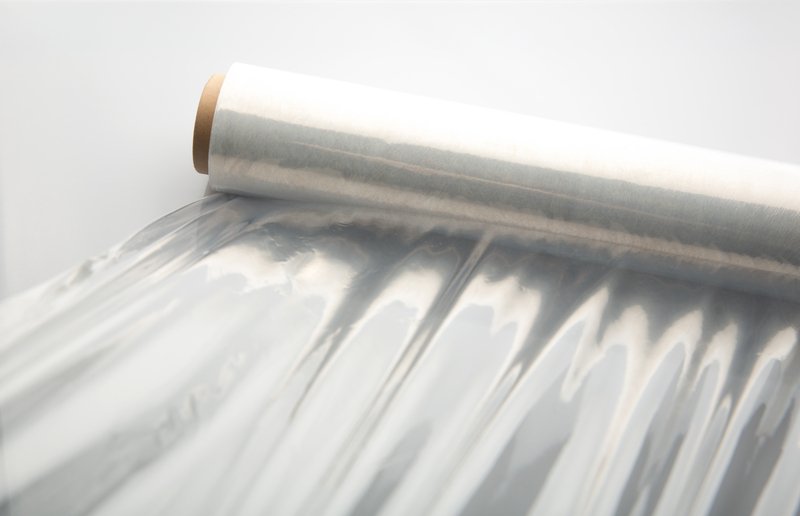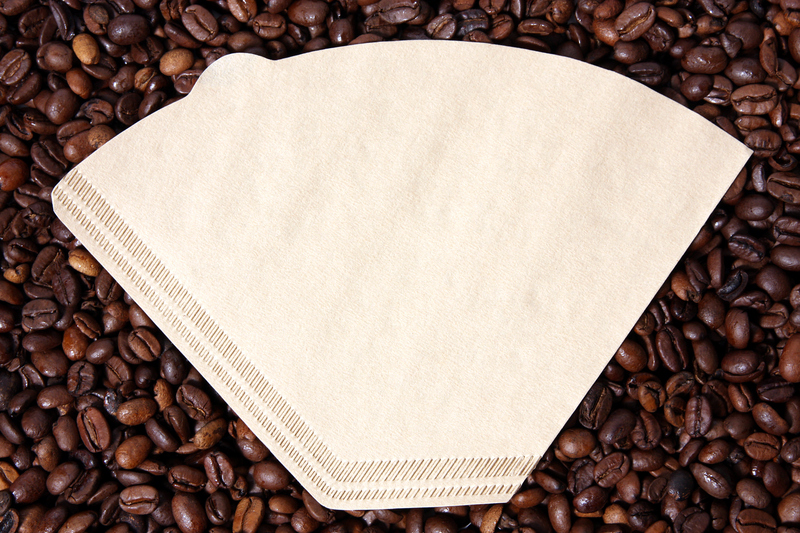Revitalize Your Space by Banishing Dampness
Posted on 30/08/2025
Revitalize Your Space by Banishing Dampness: A Comprehensive Guide to a Healthier Home
Is your living space plagued by a persistent musty smell, peeling paint, or unexplainable stains creeping along the walls? Dampness can silently infiltrate your home, affecting not only the structural integrity of your property but also your health and well-being. In this in-depth guide, we will explore how you can revitalize your space by banishing dampness, transforming your environment into a fresh, vibrant, and healthier haven.
Understanding Dampness and Its Impact
Dampness is more than a minor annoyance--it's a serious concern that can compromise your home and your quality of life. It is caused by excess moisture in the structure of a building, which develops either from condensation, leaks, or rising dampness.
Why Is Dampness Bad for Your Space?
- Structural Damage: Over time, water weakens walls, floors, and foundations.
- Health Risks: Dampness breeds mold, mildew, and dust mites, aggravating allergies and respiratory issues.
- Unpleasant Odors: Stale, musty smells linger, making your home uninviting.
- Decreased Property Value: Persistent damp can make your property hard to sell or rent.
Given these challenges, learning how to eliminate dampness from your space is crucial if you want to revitalize your home and enjoy a healthy, welcoming environment.

Identifying Signs of Dampness
Banishing dampness begins with keen observation. Here are key indicators that your space may be affected by moisture:
- Patches of discoloration or staining on walls and ceilings.
- Visible mold or mildew--often appearing as black, green, or white fuzzy spots.
- Peeling paint or wallpaper that seems to bubble and flake.
- Warped or rotting wood in skirting boards or floors.
- Condensation on windows or water droplets on walls, especially after showers or cooking.
- Stale, musty odors that persist despite cleaning.
Types of Dampness
To banish dampness and revitalize your home, you need to know which type you're dealing with:
- Condensation Damp: Caused by excess moisture in the air condensing on cold surfaces. Common in kitchens and bathrooms.
- Rising Damp: Moisture moves up from the ground into walls and floors through capillary action. Usually affects basements and ground floors.
- Penetrating Damp: Caused by water leaking through walls, roofs, or windows, often due to damaged masonry or faulty roofs.
Identifying the exact cause is fundamental in finding the right solution for banishing moisture permanently.
Effective Methods to Banish Dampness from Your Home
1. Boost Ventilation
Proper airflow is your first defense against excess moisture. Implement these strategies to keep your space dry:
- Open windows and doors regularly to let fresh air circulate.
- Install extractor fans in kitchens and bathrooms to remove steam at the source.
- Use trickle vents on windows to allow continuous airflow, even when closed.
2. Control Indoor Humidity
Keeping indoor humidity below 60% discourages mold and damp. Here's how you can control humidity:
- Purchase a dehumidifier to extract excess moisture from the air. This is especially helpful in high-risk areas.
- Avoid drying clothes indoors where possible. Use outdoor lines or vented tumble dryers instead.
- Cover pots when cooking or use lids to trap steam.
- Fix leaks immediately--whether plumbing, roofing, or around windows.
3. Insulate and Maintain Your Home
Insulation helps to prevent cold surfaces where condensation forms. Consider:
- Adding wall and loft insulation to regulate temperature and reduce risk of condensation.
- Double-glazing windows to keep cold air out and prevent condensation on glass.
- Ensuring roof tiles, gutters, and downspouts are intact and functioning, channeling rain away from your home.
- Checking exterior walls for cracks or damaged rendering, which can allow water to penetrate.
4. Damp-Proof Your Property
Rising damp is often stopped by a damp-proof course (DPC)--a horizontal barrier installed in the wall. If you suspect rising damp:
- Check for a missing or faulty DPC in older homes, and have a professional install or repair it as needed.
- Apply damp-proofing paint or injection creams--these form a waterproof barrier against moisture.
- For basements and cellars, consider waterproof tanking and proper drainage systems.
5. Tackle Penetrating Damp
Penetrating dampness often requires external repairs:
- Repair bricks and pointing or replace weathered mortar.
- Refit or reseal windows and doors to keep rain out.
- Clear gutters and downpipes regularly to prevent overflows and leaks.
Natural Remedies and Preventative Tips
Eco-Friendly Ways to Banish Moisture
Beyond building work, there are simple and natural methods to help revitalize your home by removing dampness:
- Place moisture-absorbing plants like peace lilies or Boston ferns that draw humidity from the air.
- Use desiccants like silica gel, rock salt, or charcoal in small containers around damp-prone areas.
- Hang calcium chloride or baking soda packets in wardrobes and cupboards to help absorb excess moisture.
Daily Habits to Keep Dampness at Bay
- Wipe windows and sills each morning in winter to remove condensation.
- Keep furniture a short distance from external walls to allow air circulation behind them.
- Don't overcrowd closets--leave space for air to move.
- Use wardrobe dehumidifiers or desiccant bags in closed spaces.
When to Call a Professional
Sometimes, dampness can persist despite your best efforts. If you notice severe mold growth, a persistent musty smell, or signs of structural damage, it's time to contact a qualified expert. Professional damp specialists can:
- Conduct thorough assessments and moisture mapping.
- Identify hidden leaks or sources of moisture that may be missed by the untrained eye.
- Recommend and implement advanced waterproofing or repair solutions.
Investing in professional help is crucial for safeguarding your home and health.
The Health Benefits of Banishing Dampness
Efforts to remove dampness and revitalize your space extend far beyond aesthetics. The health benefits include:
- Reduced respiratory problems like asthma and allergic reactions.
- Improved air quality--fewer allergens and irritants in the air.
- Better sleep and overall comfort, as musty odors and humid conditions are eliminated.
- Lower risk of infections--many viruses and bacteria thrive in damp, stagnant environments.
Banishing moisture is a significant step towards a healthier, happier lifestyle for you and your family.

Giving Your Space a Fresh New Look
Steps to Revitalize Once Dampness Is Gone
Once you've eliminated dampness, it's time to refresh and restore your space:
- Renew Walls & Ceilings: Remove any mold residues with appropriate cleaners and repaint with mold-resistant paints.
- Repair or Replace Damaged Materials: Swap out water-damaged wallpaper, plaster, flooring, or insulation.
- Reinvigorate Decor: Bring in new soft furnishings, curtains, and cushions to banish lingering odors.
- Introduce Plants: Houseplants not only absorb humidity but also help purify the air.
Conclusion: A Fresh Start Awaits
To revitalize your space by banishing dampness is to invest in the comfort, beauty, and value of your home. Armed with knowledge and determination, you can:
- Identify and address the sources of dampness
- Adopt practical and long-lasting solutions
- Maintain a dry, inviting environment
Don't let excess moisture hold your home hostage. Banishing dampness is the key to a vibrant, healthy, and inspiring living space. Start today--and rediscover the joy of a refreshed, revitalized home!
Frequently Asked Questions
- How can I tell if my home has dampness?
Look for visible stains, mold, musty odors, condensation on windows, and peeling paint. These signs often point to underlying moisture issues. - What are natural ways to tackle dampness?
Increase ventilation, use dehumidifying plants, and add homemade desiccants like charcoal or baking soda to small spaces. - Should I use a dehumidifier?
Yes, especially in persistently damp areas. Dehumidifiers help maintain optimal indoor humidity, safeguarding against mold growth. - When should I call in a professional?
If you see large areas of mold, experience continual musty odors, or notice structural damage, consult a damp specialist promptly.
For more tips on revitalizing your home and defeating dampness, stay informed with expert advice and practical solutions available online.



